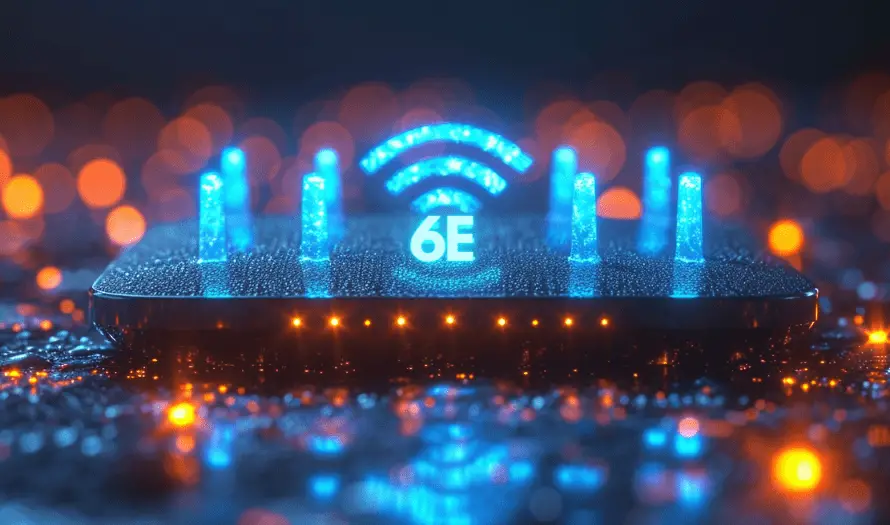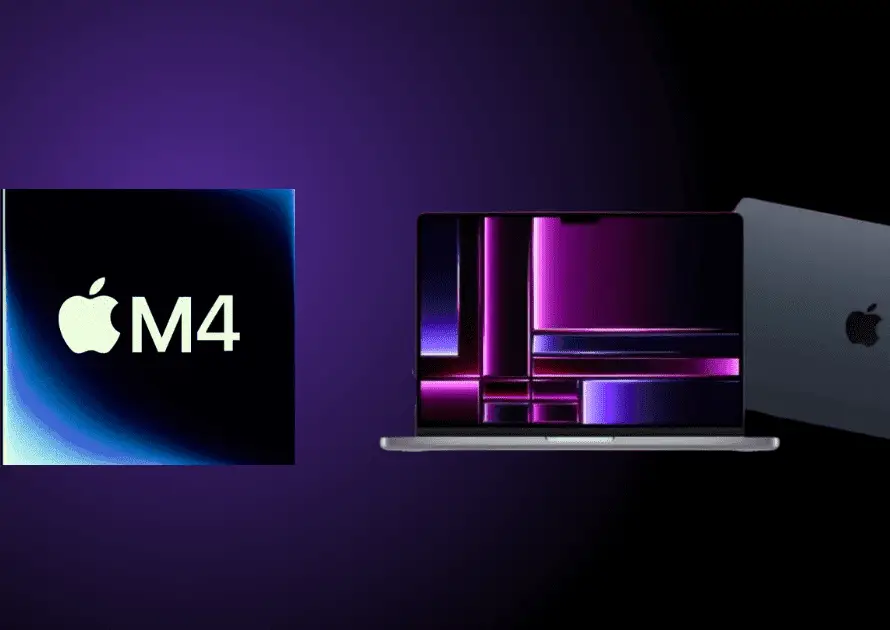CES 2024, the annual extravaganza of innovation and technology, once again transformed Las Vegas into a futuristic hub, showcasing a plethora of cutting-edge advancements that promise to redefine our daily lives.
This year’s event was marked by a dazzling array of AI-powered wearables, including luxurious $2,000 earbuds that cater to audio perfectionists and smart jewelry that harmonizes health monitoring with fashion.
Hyundai’s unveiling of an electric vertical take-off and landing aircraft heralded a new era in urban mobility. At the same time, major players like Honda and Google Maps introduced groundbreaking features for electric vehicles.
The smart home sector witnessed a strategic shift with LG’s focus on interconnected, user-friendly home technologies. Gaming enthusiasts reveled in AMD’s introduction of the Radeon RX 7600 XT GPU, setting a new benchmark in gaming graphics.
Google and Samsung merged their tech prowess to enhance content sharing across Android devices.
Health and accessibility took center stage with innovations like OneCourt, which opened up new dimensions of sports for the visually impaired, and advanced health monitoring gadgets that underscore the growing trend towards telehealth.
CES 2024 not only highlighted the relentless pace of technological advancement but also underscored the industry’s commitment to creating a more connected, convenient, and accessible future
What Is CES
CES, originally known as the Consumer Electronics Show, is a renowned annual event that has become a focal point in the world of technology. Starting in 1967 in New York City as an offshoot of the Chicago Music Show, CES quickly established itself as a key venue for showcasing cutting-edge consumer electronics.
It has evolved from a biannual event to an annual showcase in Las Vegas, reflecting the rapid development and significance of the tech industry. CES stands at the forefront of innovation, where industry trends are set, and future technologies are unveiled, making it an indispensable event for tech enthusiasts and professionals alike.
At CES, a wide array of technologies and products are displayed, ranging from the latest in TVs, smartphones, and personal devices to advancements in smart home technology and IoT devices.
The event is a hotbed for new developments in computing, gaming, VR/AR technologies, and automotive tech, including electric and autonomous vehicles. In recent years, health and wellness have taken center stage with the proliferation of wearable tech and health monitoring tools.
CES has become a showcase for AI and robotics, demonstrating their increasing integration into everyday products and services. This event is not just about unveiling new gadgets; it’s a glimpse into the future, highlighting how technology will shape our lives and societies.
Samsung’s Artificial Intelligence Robot Ballie
Samsung reintroduced Ballie, its innovative AI robot, with several upgrades from its original version, first revealed in 2020. Ballie is designed as a spherical home robot about the size of a bowling ball, integrating advanced technologies to function as a smart home assistant.
Ballie’s capabilities are centered around its ability to autonomously navigate around the home, offering assistance with various tasks. It connects with and manages home appliances, learning from the user’s habits to provide more personalized services.
Ballie is equipped with a spatial lidar sensor for navigation, and it also features a 1080p projector with two lenses. This allows Ballie to project movies and video calls and even serve as a secondary PC monitor. The projection system is intelligent enough to adjust the picture based on wall distance and lighting conditions.
One of the most intriguing aspects of Ballie is its interactive nature. It can be controlled through voice commands or by sending text messages, which Ballie responds to with the help of a chatbot. This functionality allows users to command Ballie to perform tasks like playing a movie on the nearest wall.
Ballie is equipped with a built-in infrared transmitter, enabling it to control not only smart devices but also older, non-smart appliances like air conditioners and TVs.
Beyond these functionalities, Samsung has promised more features for Ballie, such as automatic reminders for household tasks , access to remote medical services, and personalization based on user presence detection.
The robot can map a home’s floor plan and identify the locations of smart devices, further enhancing its utility in a smart home environment.

Samsung transparent Micro-LED screen
Samsung made a significant leap in display technology by unveiling the world’s first transparent Micro LED screen. This innovative technology, which was showcased alongside transparent OLED and LCD models, is notable for its bright display and frameless, fine glass panel design.
The Micro LED panel stands out with its exceptional brightness and clarity, making it easier to see objects behind the screen. It creates an almost holographic effect, giving content the appearance of floating in mid-air. The display unit is impressively thin, adding to the illusion of a floating screen.
The Micro LED technology’s high pixel density ensures sharp and clear images. Samsung’s transparent Micro LED displays are brighter than their OLED counterparts. They are less affected by ambient light, making them suitable for various environments, including homes and business settings.
The modular nature of Samsung’s Micro LED panels allows for customization in aspect ratio, shape, and size, making it versatile for different applications, such as large scoreboards or innovative advertising.
The technology is still in its early stages, with no specific details on pricing or availability. Still, it represents a major advancement in display technology with potential applications in numerous fields.

Rabbit R1 – The Future of AI Assistance
Rabbit R1 is a revolutionary AI assistant introduced by Rabbit, a forward-thinking AI startup based in Santa Monica. This device marks a significant leap in personal assistant technology, redefining how we interact with our digital world.
The Rabbit R1, developed in collaboration with the renowned design firm Teenage Engineering, is not just another gadget; it’s a testament to the seamless integration of artificial intelligence into everyday life.
With its sleek, retro-inspired design, the R1 breaks the Mold of traditional devices, offering a fresh and user-friendly experience. Its compact size, reminiscent of a stack of Post-it notes, and vibrant, luminous orange accent make it not only functional but also a visually appealing piece of technology.
At the core of R1’s innovation is its ability to simplify the complex. It brings together the functionalities of various smartphone apps into one handheld device, offering an app-free online experience.
This is not just a step forward in convenience; it’s a leap towards a more intuitive and efficient way of managing our digital tasks. From booking flights to ordering food and even making video calls with its unique 360-degree rotating camera, the Rabbit Eye, the R1 is designed to be the ultimate personal assistant, ready to respond to your every command.
Key features of the Rabbit R1 include A user-friendly interface equipped with a touchscreen and an analog scroll wheel for navigation. A rotating camera, microphones, and speakers enable interactive communication.
A push-to-talk button ensures the device is not always listening for privacy reasons. Runs on Rabbit OS, powered by a Large Action Model AI, which is claimed to be faster in response and result delivery than other AI models, such as ChatGPT.
Wi-Fi and Bluetooth compatibility for enhanced connectivity. Includes a USB-C port and a SIM card slot, adding to its functionality.

Chat GPT in its vehicles
Volkswagen’s groundbreaking integration of ChatGPT into its vehicles, a highlight of CES 2024, signifies a major advancement in automotive technology. This move sees the integration of the AI-based chatbot ChatGPT into Volkswagen’s intelligent voice assistant, IDA, across various models, including ID.7, ID.4, ID.5, ID.3, Tiguan, Passat, and Golf.
The implementation of ChatGPT enhances the existing capabilities of the IDA voice assistant, enabling it to perform a wide range of functions, from controlling car features to answering general knowledge questions, all through voice commands.
Designed with a focus on user convenience and safety, this feature allows drivers to interact with their vehicles and access information without taking their hands off the wheel or eyes off the road.
The integration of ChatGPT into the vehicle’s backend offers an intuitive, hands-free interface, facilitating seamless interaction and providing a more personalized in-car experience.
Volkswagen has emphasized data protection and user privacy in this integration. Queries made to the voice assistant are handled anonymously, ensuring that no personal data is compromised.
The system is designed to prioritize security, ensuring that ChatGPT does not access any vehicle data and that queries are immediately deleted to maintain the highest level of data protection.
This integration is a part of Volkswagen’s broader strategy to incorporate advanced technology into its vehicles, enhancing the driving experience and ensuring that their cars remain at the forefront of the automotive industry’s technological evolution.
Volkswagen plans to standardize this feature in many of its production vehicles in the second quarter of 2024, illustrating the company’s commitment to making cutting-edge technology accessible to a wider audience.
This moves by Volkswagen at CES 2024 not only enhances the functional capabilities of their vehicles but also positions the brand as a leader in automotive innovation.
The incorporation of AI technologies like ChatGPT into everyday vehicles marks a significant step towards the future of connected, intelligent cars, paving the way for new possibilities in automotive interaction and convenience.
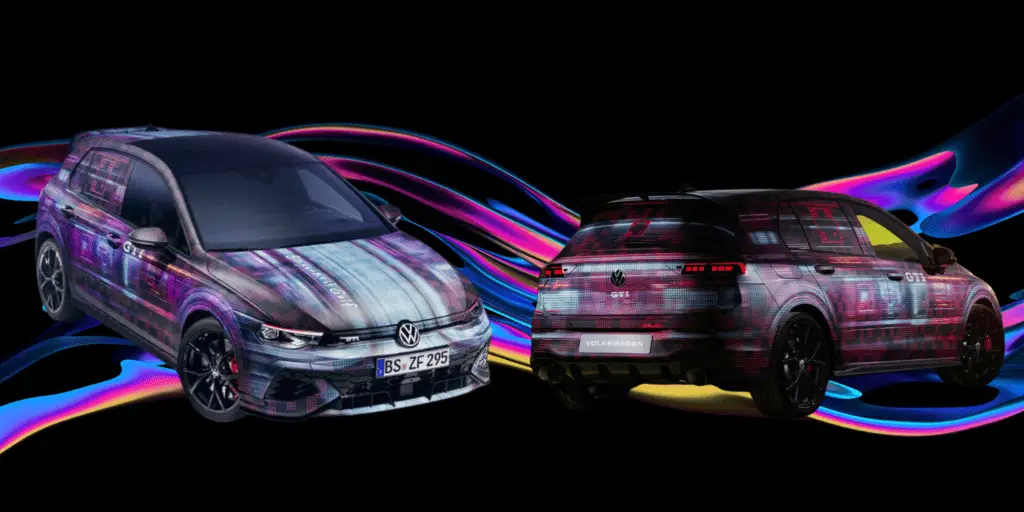
Augmental Mouth Pad
The Augmental Mouth Pad is a groundbreaking innovation, serving as a paradigm shift in the way we interact with technology. It’s a device designed to translate subtle mouth movements into digital commands or text, providing a unique means of communication for people who are either unable or prefer not to use traditional speech.
This technology is particularly significant for individuals with speech impairments, offering them a new avenue for interaction with digital platforms and the world around them.
The Mouth Pad is a small, unobtrusive device that fits comfortably in the user’s mouth, similar to a dental retainer. It’s equipped with sensors that detect minute movements of the tongue and other parts of the mouth.
These movements are then processed by advanced algorithms to interpret them as specific commands or text. This system allows for a wide range of applications, from simple text input to complex command execution in various software environments.
One of the most significant implications of the Mouth Pad is its potential for use in environments where silence is mandatory or preferred, such as libraries, shared workspaces, or during late-night sessions where one would not want to disturb others.
It’s also invaluable in professional settings where hands-free operation is essential, such as in certain medical or industrial environments. Moreover, the Augmental Mouth Pad’s technology represents a major step forward in assistive technology.
It’s not just a tool for those with speech impairments; it’s a device that can facilitate more inclusive communication. By enabling voiceless interaction, it opens up new possibilities for individuals who, for various reasons, find verbal communication challenging.
The Mouth Pad also has potential applications in the gaming and virtual reality sectors, offering a new way to interact with games and virtual environments. It could provide gamers with a more immersive experience, allowing them to perform actions or communicate in-game without the need for traditional controllers or voice commands.
The Augmental Mouth Pad is more than just a technological novelty; it’s a device that can fundamentally change the way we interact with our devices and each other. It stands as a testament to the innovative spirit of CES and the tech industry’s commitment to creating more accessible and inclusive technologies.
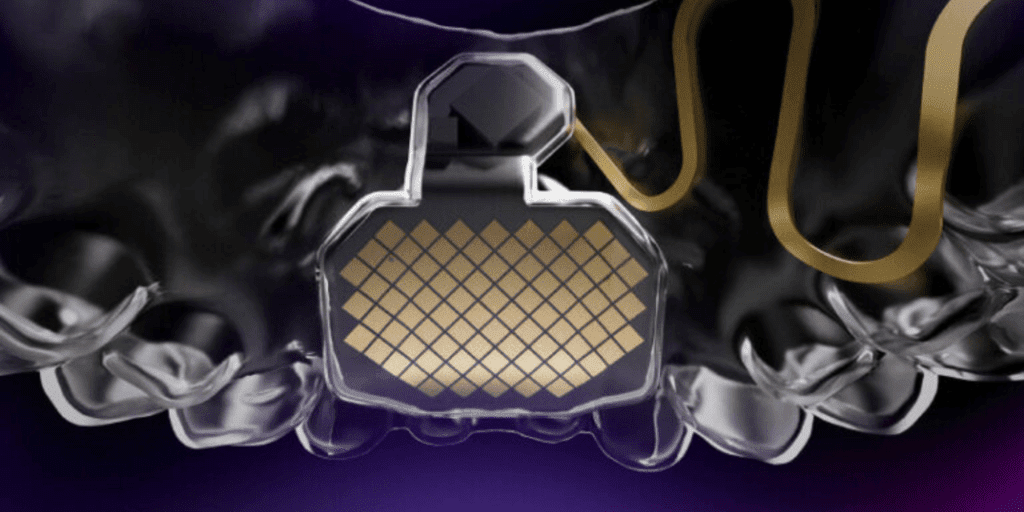
Microsoft’s Copilot Key in Windows 11 PCs
Microsoft unveiled a groundbreaking feature for Windows 11 PCs: the Copilot key. This addition represents the first major change to the PC keyboard in nearly three decades, showcasing Microsoft’s commitment to integrating AI technology more deeply into the computing experience.
The Copilot key, when pressed, activates the Copilot in Windows experience, a user-friendly interface designed to make AI interaction effortless and intuitive.
This feature is part of Microsoft’s broader vision to create a more personal and intelligent computing environment where AI is seamlessly integrated across the system, hardware, and cloud services.
The development of the Copilot key is a response to the rapidly evolving AI landscape and Microsoft’s ambition to be at the forefront of this technological shift. It emphasizes the company’s dedication to improving user experience and productivity through AI-driven innovations.
The Copilot key will appear on a range of new Windows 11 PCs from various Microsoft ecosystem partners. Its release is scheduled to start in late January and continue through Spring, with the feature also being included in upcoming Surface devices.
This rollout reflects Microsoft’s strategy to make AI tools more accessible to a wider audience, thus democratizing the use of advanced technology in everyday computing tasks.
Microsoft has worked closely with silicon partners like AMD, Intel, and Qualcomm to ensure that the new AI experiences are supported by the latest hardware innovations.
This collaboration aims to leverage the combined power of the GPU, CPU, NPU, and cloud computing to deliver a more powerful and efficient AI experience on Windows PCs.
The introduction of the Copilot key is a testament to Microsoft’s ongoing efforts to enhance its products and services with AI capabilities. From reinventing search with Copilot in Bing to boosting productivity with Copilot for Microsoft 365, Microsoft has consistently focused on creating AI solutions that are both powerful and user-friendly.
The Copilot key is set to become a central element of the Windows PC experience, offering users a new and easier way to interact with AI and unlock their creative and productive potential.
This innovation is part of Microsoft’s broader vision for a future where technology and AI are more intertwined, promising an exciting and transformative journey for Windows users. The Copilot key not only simplifies access to AI features but also symbolizes a new era in personal computing, where AI is a fundamental and accessible tool for everyone.
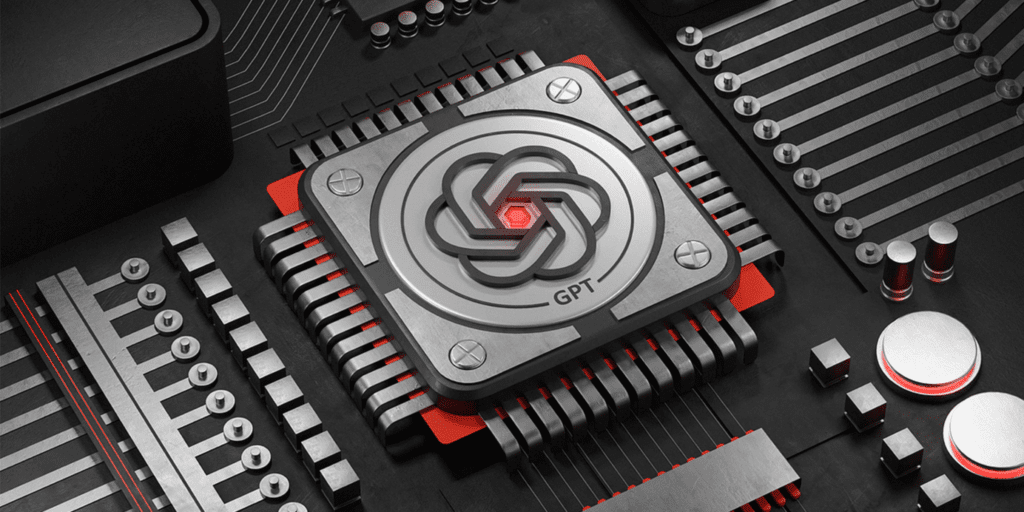
LG Invisible TV
LG unveiled their Invisible TV, a product that is set to revolutionize the home entertainment industry. The design of the Invisible TV is a marvel of modern technology, featuring a transparent OLED display that renders the television virtually invisible when not in use.
This innovative design allows for an unprecedented level of aesthetic integration into any home environment, catering to a variety of interior styles. The technology underpinning this remarkable device is LG’s proprietary Transparent OLED technology.
So, it employs organic light-emitting diodes that illuminate without the need for a traditional backlight. This not only enables the creation of transparent screens but also ensures that the display shows vivid colors and deep blacks, even while maintaining high transparency.
LG has not compromised on functionality for the sake of design. The Invisible TV boasts 4K resolution with HDR support, offering a premium viewing experience with sharp, vibrant images.
The user interface is intuitively designed, making it easy to access streaming services, applications, and other smart features. Additionally, the TV supports voice commands and integrates an AI-powered system for personalized content recommendations.
The LG Invisible TV is more than just a technological achievement; it represents a paradigm shift in home entertainment. Its ability to blend seamlessly into the living space offers new possibilities in interior design, promoting a more spacious and less cluttered environment.
This innovation is a significant step towards a future where home electronics are not just functional but also harmonious elements of home decor. LG’s introduction of the Invisible TV at CES 2024 is a clear indication of its commitment to pushing the boundaries of innovation and design in home electronics.
It’s a transformative product that challenges conventional notions of television and home entertainment, potentially influencing the future direction of the entire industry. The LG Invisible TV is not just a new product; it is a visionary glimpse into the future of how technology can be integrated into our daily lives, redefining our interaction with home entertainment systems.

Quick Share
This is a unified file-sharing solution developed in collaboration with Samsung. It combines the best aspects of Google’s Nearby Share and Samsung’s Quick Share into a cross-Android solution, making it the default, built-in option for peer-to-peer content sharing across devices in the Android and Chromebook ecosystems.
Quick Share will allow users to see a list of available nearby devices easily and control their privacy settings for file transfers. It is set to roll out to current Nearby Share-enabled devices soon.
Android Auto Updates
Android Auto is receiving an EV-friendly update. This update will enable EVs compatible with Android Auto to share real-time battery information with Google Maps. This feature will be first available in vehicles like the Ford Mustang Mach-E and F-150 Lightning, providing drivers with estimated battery levels upon arrival, suggested charging stops, and estimated charging durations.
A new update allows users to send planned trips from their phones directly to Google Maps on their car display.
New Chromecast Features
Google is expanding the capabilities of Chromecast with new features, including support for Fast Pair. This will allow users to quickly find and connect nearby Bluetooth accessories, like headphones, to their Chromecast with Google TV and other Google TV devices.
Users can now cast TikTok content from their phones to Chromecast built-in devices, with plans to enable the casting of live videos from TikTok in the future.
Fast Pair
Fast Pair support, is being expanded to include Chromecast with Google TV and other Google TV devices. This feature facilitates quick and easy pairing of compatible Bluetooth headphones or speakers with your devices, enhancing the convenience of connecting accessories for media consumption.
Other Innovative Products
Asus revealed its gaming-focused ROG Phone 8 series, featuring the latest Snapdragon 8 Gen 3 chipset. The smartphones boasted improvements like smaller bezels, IP68 water and dust protection, and reduced weight. Despite a slight reduction in battery capacity, Asus claimed a similar battery backup to its predecessor.
Nvidia announced the GeForce RTX 4080 SUPER chip, promising enhanced gaming and generative AI performance. The new chipset aimed for 1.4x faster gaming performance and 1.5x speedier video generation compared to the previous generation, priced at $999 and set to be available from January 31.
Sennheiser Momentum True Wireless 4 Earbuds with aptX Lossless Audio and Snapdragon Sound Technology.
Lenovo Think Book 13x Gen 4 Laptop with integrated AI, powered by Intel Core Ultra 9 processor.
Master & Dynamic MW75-Neuro Noise-cancelling headphones with EEG technology for monitoring brainwaves and stress levels.
ASUS ROG Falchion RX Low Profile Keyboard Full-size mechanical keyboard for gamers with reduced click noises.
Asus AirVision M1 Smart glasses with a 1080p Micro OLED display, built-in speakers, and a touchpad.
JBL Clip 5 Bluetooth speaker with 10% more bass and 24-hour battery life.
Amazfit Helio Smart Ring A titanium alloy smart ring offering water resistance and competing with the Oura ring.
Hisense 110UX ULED TV is a 110-inch television with 40,000 local dimming zones, 10,000 nits brightness, and Dolby Atmos Flex Connect wireless audio technology.
Sennheiser Momentum Sport Earbuds that not only provide standard listening functions but also monitor health metrics like body temperature and heart rate.
Sony XR Headset A premium headset with 4K OLED micro displays and the Qualcomm XR2+ Gen 2 chipset focused on delivering 3D content.
New Alexa Skills Enhanced functionalities for Alexa, transforming it into a generative AI assistant through Character.AI integration.
Samsung SmartThings Map is an innovative smart home feature providing an interactive map display of connected devices.
Casio G-Shock Rangeman HPR-1000 is a smartwatch tailored for adventure enthusiasts with GPS integration and various health monitoring features.
Bluetooth Auracast Headphones offer wireless connectivity with various devices.
LG C4 OLED TV is the latest iteration of the C-series TV with higher brightness, OLED panels, Dolby Atmos sound technology, and an Alpha 9 Gen 7 processor.
HiSense UX Mini-LED TV A 110-inch TV with 10,000 nit brightness, 40,000 local dimming zones, 4.2.2 channel Dolby Atmos speakers, and 4K resolution.
Lockly Zeno Series Visage Smart Lock A smart lock with dual 2MP IR face-scanning cameras offering biometric authentication and secure access.
MW75-Neuro Brain Scanning Headphones Headphones use brainwave-scanning technology to measure focus levels and detect signs of stress.
Segway E2 Pro is an electric scooter for urban commuters with safety features, a 16.8-mile range, a top speed of 15.5 mph, and Apple Find My support.
Minitailz AI Smart Collar A smart collar for pets tracking location, heart rate, and activity, and utilizing AI for health monitoring.
Linxura Smart Controller is a smart home controller with an iPod-style scroll wheel, an e-ink display, and compatibility with devices from multiple manufacturers.
Impact of CES 2024 on the Tech Industry
CES 2024 significantly impacted the tech industry, setting the stage for future technological advancements and trends.
The event showcased a strong emphasis on AI integration, as seen in Microsoft’s introduction of the Copilot Key for Windows PCs and Volkswagen’s integration of ChatGPT into its vehicles, signaling a shift towards AI-enhanced user experiences across various sectors.
Smart home technologies also saw notable advancements, with companies like LG pivoting towards them. CES 2024 significantly impacted the tech industry, setting the stage for future technological advances and trends.
The event showcased a strong emphasis on AI integration, as seen in Microsoft’s introduction of the Copilot Key for Windows PCs and Volkswagen’s integration of ChatGPT into its vehicles, signaling a shift towards AI-enhanced user experiences across various sectors.
Smart home technologies also saw notable advancements, with companies like LG pivoting towards interconnected, automated home solutions, reflecting a broader industry trend towards enhancing living environments through technology.
The unveiling of devices like the Rabbit R1 AI pocket companion and AMD’s Radeon RX 7600 XT GPU highlighted the ongoing evolution in personal computing, gaming, and graphics technologies.
The event also underscored the automotive industry’s shift towards sustainable and innovative transportation solutions, exemplified by Hyundai’s eVTOL aircraft and the focus on electric vehicles.
Innovations in health monitoring gadgets and accessibility-focused technologies, such as the Augmented MouthPad, demonstrated the industry’s commitment to enhancing healthcare and making technology more accessible.
Collaborations and partnerships, like the joint efforts of Google and Samsung, indicated an industry trend toward working together to create more unified and seamless user experiences.
CES 2024 illustrated how the consumer electronics industry is rapidly transforming, driven by advancements in AI, sustainability, interconnectedness, and a focus on improving the user experience in all aspects of life.
This event not only highlighted the current state of technology but also provided insights into how it will continue to evolve and integrate more deeply into our daily lives.
Final Thoughts
CES 2024 marked a defining moment in technological evolution, brilliantly showcasing how far we have advanced and where we are heading. This event was a testament to the power of innovation, revealing a future where technology is intricately woven into the fabric of daily life.
The showcase of AI-powered wearables, including sophisticated earbuds and smart jewelry, highlighted the seamless integration of luxury, health, and technology. Hyundai’s electric vertical take-off and landing aircraft and advancements in electric vehicles by companies like Honda and Google Maps, demonstrated a significant shift towards sustainable urban mobility.
In the realm of smart homes, LG’s interconnected technologies signified a major leap towards more intuitive and user-friendly living spaces.
Gaming took a front seat with AMD’s Radeon RX 7600 XT GPU, pushing the boundaries of graphical performance. The collaboration between tech giants like Google and Samsung for enhanced content sharing across devices underlined the industry’s move towards more cohesive technological ecosystems.
The event also placed a spotlight on health and accessibility, showcasing innovations like OneCourt and advanced health monitoring tools, reflecting a growing trend towards inclusive and telehealth technologies.
It was a vivid preview into a future where technology elevates every aspect of our lives, emphasizing sustainability, connectivity, and accessibility.

